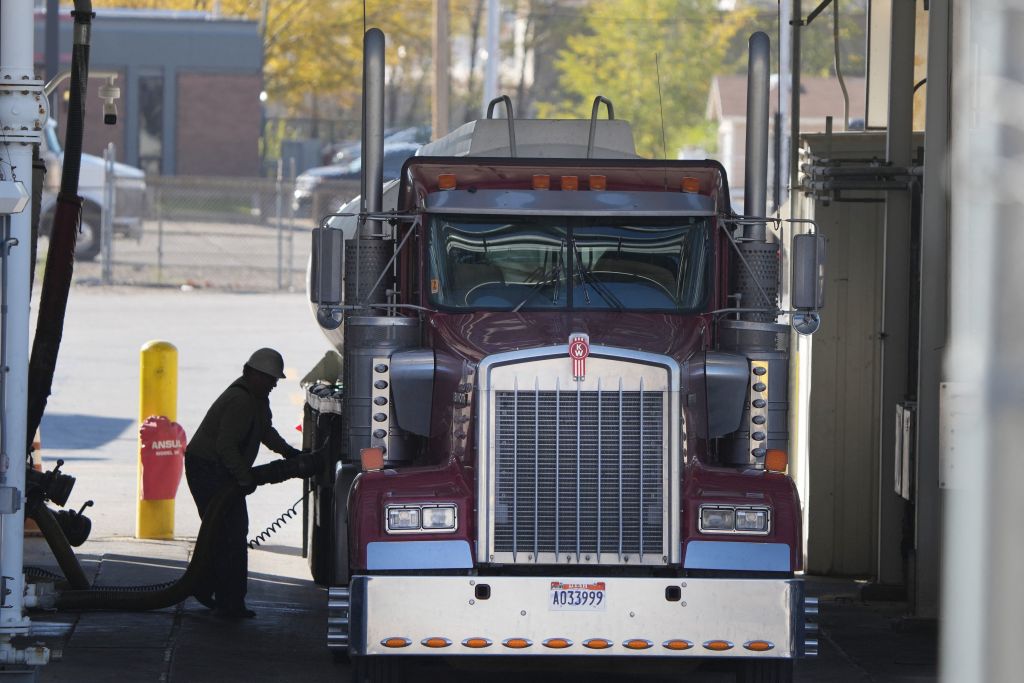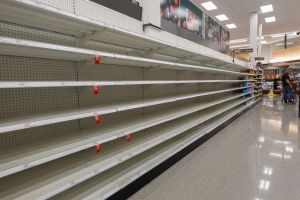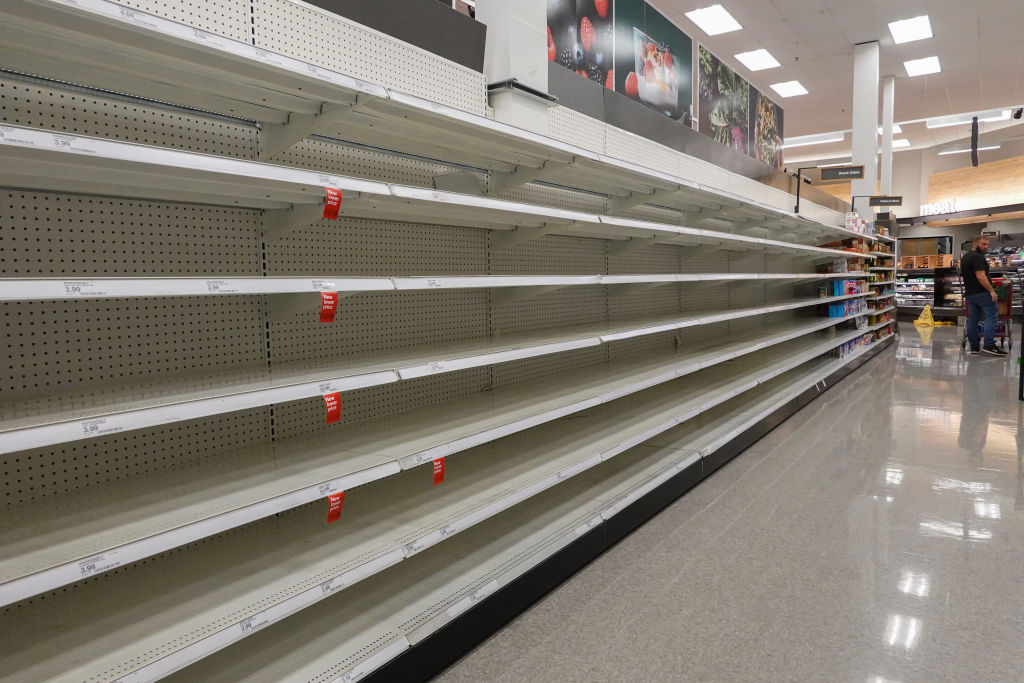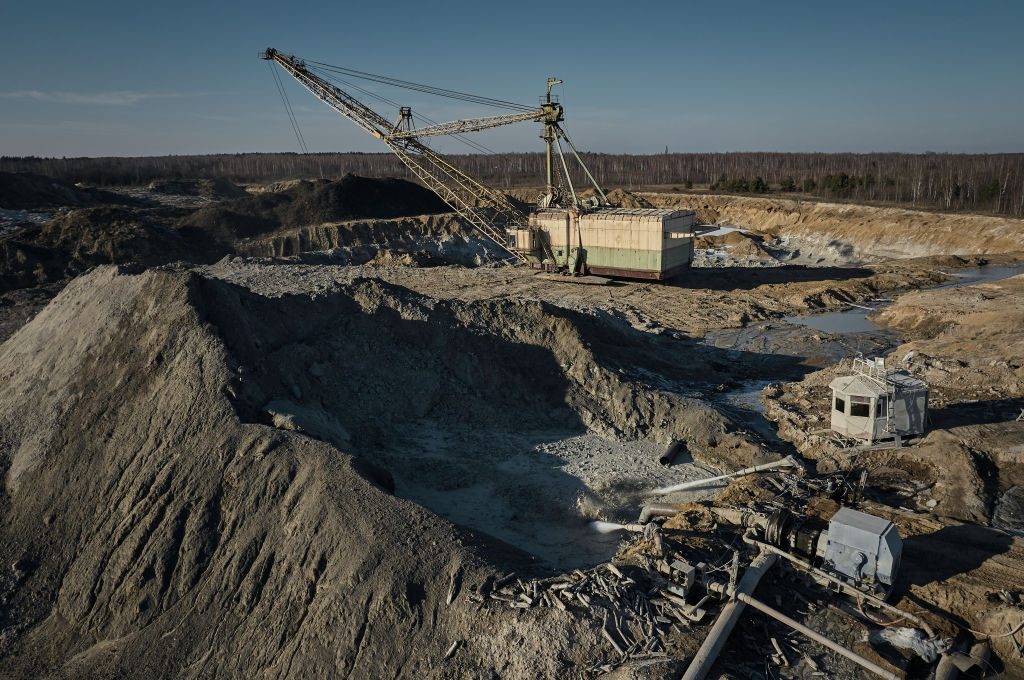With Christmas right around the corner, the supply chain crisis, and what or whom to blame for it, is a hot topic this season.
The New York Times and Wall Street Journal recently published a pair of articles about a purported nationwide shortage of truck drivers causing delivery delays. According to Business Insider, however, the reports of a driver shortage are “overblown.” Time, too, rebutted the claims with a column declaring that “The Truck Driver Shortage Doesn’t Exist.”
(My theory is that all the sane truck drivers in America abandoned their rigs and ran for the hills the moment they heard Joe Biden say he “used to drive an 18-wheeler.” Egads!)
What, then, are we to believe? Why, the truck drivers themselves, of course! So off to Sapp Bros. Truck Stop in Clearfield, Pennsylvania, I go.
“They say there’s a shortage, then how come I can’t find a place to park?!” a weathered, twenty-four-year veteran truck driver with soft eyes and a grizzled beard named Jack exclaims to me over his plate of chicken-fried steak. “Trucks are lined up right there on the fog line [outside a rest stop], an inch from my mirrors.”
With this, he mimics a jerky, swerving motion that causes me to jump back in my booth.
“If you could change one thing about the trucking industry,” I ask Jack, “what would it be?”
“They won’t leave the logbooks alone,” he says. “Ever since they mandated ELDs, this industry got stupid.”
ELDs are “electronic logging devices.” Since 2017, the Federal Motor Carrier Safety Administration (FMCSA) has mandated that most commercial drivers have ELDs hardwired to their engines to track their hours of service. That means truckers have a fourteen-hour window in which they can drive eleven hours, and they are required to be off-duty for at least ten consecutive hours.
“The ELDs make things a lot more difficult,” Ron, who drove trucks for fifteen years before going to work first in the strip mines and now for an oil company, tells me. “You’re only allowed to drive eleven hours a day. How many people are only awake eleven hours a day? I work [my current job] twelve, fourteen-hour days sometimes. You tell a truck driver he can’t work more than eleven, then make him take a half-hour break, there’s ten-and-a-half hours a day you’re drivin’. And you’re not allowed to log more than X miles in so many hours, so you’re kinda screwed there, too. You can’t average seventy miles an hour. I don’t stop. When I was driving, I went all day.”
Truck driving is not for the faint of heart. The job is a tough one that often requires drivers to be away from their homes and loved ones for extended periods. Still, statistics show that attracting truck drivers isn’t a problem, but retaining them is.
“According to a survey by the American Transportation Research Institute (ATRI), the ELD mandate is the biggest concern in the trucking industry,” reports CDLjobs.com. “The biggest concern surrounding ELDs is that they may force a decrease in driving hours and thus hurt productivity. It could also lead to discomfort for drivers.”
The truckers I spoke to explained how the mandate cuts both ways by limiting drivers’ output and making them drive when they don’t want to.
“It forces you to drive, because your electronic log starts,” says Jack. “If you want to stop, you can’t. If you run into a friend and want to visit over a cup of coffee for a couple hours while you wait for rush hour to die down, you can’t.”
On the other hand, Ron says, “You used to have an 8-2 split [eight hours of driving, two hours of rest]. Now they don’t let you do that. There’s a mandated thirty-four-hour reset period. You lose thirty-four hours a week that you could be drivin’, because you’re allowed seventy hours in eight days. If you hit that, you have to stop for thirty-four hours and reset your clock. I got stuck in New Mexico for seventy-two hours sitting at a truck stop one time. I was driving teams [taking turns driving with another trucker], and we both ran out of hours.”
As a team driver, Ron used to leave Pennsylvania on a Saturday and make it to California and back by the following Sunday, taking four-hour breaks with his driving partner. Under the new regulations, it takes five days just to get to California, then drivers are required to take a break and reset their clocks once they get there.
“You can do it faster than that, if they’d leave ya alone,” Ron says. “An hour a day makes a big difference when you’re tryin’ to get somewhere. And if you don’t stay out, you don’t make any money.”
The price of fuel is driving independent contractors out of business. Freight’s cheap, and it’s not worth it for owner/operators who basically only get paid per load.
“When I started, I got paid twenty-six cents a mile,” says Ron. “Now, it’s fifty to sixty cents a mile. But with the regulations DOT put on there, you can’t make any money. You’re pretty much working for free. Once you get your tags, license, fuel (with fuel tax in every state in which you operate), food, then if you have a truck payment on top of that, usually $1,500 to $2,000 a month, you don’t make it.”
Ron points out an average pay of $300 a day doesn’t get you very far.
“By the time you wash your clothes, get something to eat, shower, you’re down to $225. Food on the road isn’t cheap. Every truck stop you go to — there’s drinks, coffee, showers — you’re spending money. I used to take 100 bucks a week when I’d go out. By Wednesday, I was broke.”
Jack tells me that under the ELD mandate, everyone is starting and stopping at the same time, because the truck drivers all pick up freight when the loading docks open first thing in the morning, they go all day because the clock is literally ticking, and they all stop at the same time when they simultaneously clock out at night. Many truck stops are taking advantage of this by charging trucks $15 or more to park, and drivers who don’t want to risk not having a spot will pay to reserve one.
When the FMCSA proposed the ELD rules, the agency estimated it would “save 26 lives and prevent 562 injuries every year,” and save the trucking industry about $1 billion in administrative costs annually by streamlining the records system.
It doesn’t appear the mandates are working, though. Who’s to say the truck drivers are actually resting when they’re told to? It’s not in their, or their employers’, interest to get in a wreck or get a speeding ticket. But now, instead of having a nice, timely, smooth stream of logistical transport, there’s a clogged-up, start-stop competitive mess that’s aggravating everyone and adding stress and expense to our already-overburdened drivers.
In 2019, the National Highway Traffic Safety Administration released a report on crash fatalities, showing what had happened a year since the ELD mandates were in full effect. “[T]he NHTSA data showed that fatal crashes involving large trucks actually increased by 0.9%,” reports CDLjobs.com. “Additionally, large truck occupant fatalities also increased by 0.8% to 885 in total for 2018. This marks the highest rate of large truck occupant crash deaths since 1988, when 911 people lost their lives.”
The website further reports that in a letter sent to Congress, James Lamb, chairman of the Small Business in Transportation Coalition, called for the immediate suspension of the ELD mandate, writing, “Our members have reported to us that they have witnessed an increase in truck drivers speeding recklessly since the ELD rule went into effect to beat the clock, a clock that has now become controlled by machines.”
Jack tells me drivers are pressured to take risks — often venturing out onto the roads in inclement weather or onto busier-than-normal roadways because the mandates prevent them from taking a break when they feel it’s necessary.
The ELD mandates may be fine for giant trucking corporations that can afford to sideline some of their thousands of drivers every seventy hours, but for small trucking companies that need their limited drivers to work, and owner-operators who don’t make a dime when they’re not on the road, these mandates are destroying livelihoods.
When I was a kid growing up in rural Pennsylvania, everyone knew someone who was a truck driver. It was a respectable occupation that carried with it a blue-collar, romantic allure. People made movies and sang songs about adventuresome truckers — American heroes living the American dream. I remember a man who sang at our church wearing cowboy yoke jackets at the pulpit. Western wear — picked up by the truck driving singer in an exotic land (Dallas, Texas) — was rare and made an impression on me. Those days, however, as University of Pennsylvania sociologist Steve Viscelli writes in The Big Rig: Trucking and the Decline of the American Dream, are fading fast.
Truck drivers are an admirable breed. They get up early, stay up late, do a hard, demanding, lonely job that takes a toll on their bodies for little pay, and are rarely recognized for their contributions to the economy and to the first-world lifestyles we enjoy.
“All people know is they’re gonna get their stuff, and they don’t care how much work has to go into getting it there, how many people have to touch it, how many trucks have to pull it,” Ron says. “There’s nothing in a household that didn’t get moved more than one time. Nobody notices that. They complain because a truck is doing fifty miles per hour in a sixty. Well, I got 80,000 pounds on me.”
Still, for all the long hours and thankless work, Ron says he still misses the road sometimes.
“The turning point for me was when I came home and my dog wouldn’t let me in the house,” he says. “She didn’t recognize me. I had to sit on the porch and wait for my wife to come home. There’s times I wish I was still doin’ it, though. I was in every state. I was even in Canada. Seen it all. I’ve been on just about every interstate, every highway. That was the best part about it. Stopping somewhere like the Grand Canyon. Driving through there, you take a little break, pull in, have a good time. The lifestyle used to be different out there, too. You had the camaraderie on the CB radio, people’d talk. Now, nobody says nothin’.”
Jack says a lot of insurance companies consider CBs to be distracting and make drivers take them out of their trucks. But this leaves truckers without the ability to warn each other about upcoming hazards. “Then there are these hundred-car pile-ups in the winter, no one knows about them,” he says.
After nearly a quarter-century on the road, Jack has found a gig that only has him driving within an eight-hour radius of his home base, so he isn’t gone too much. Still, he’s frustrated.
“The government needs to step back let the drivers regulate themselves,” he said. “We know what we can do.”

























